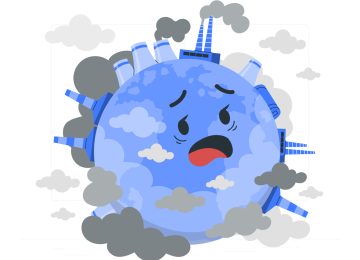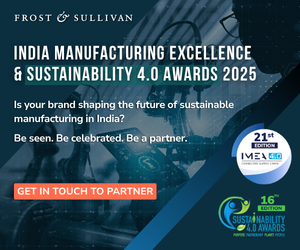Sunila Sahasrabudhe is an experienced ESG Lead with a background in private equity, including leadership roles in underground metro projects and heavy civil engineering. She has worked as Vice President, ESG, at Arpwood Partners and Head, ESG, at Biocon Limited, Bengaluru. Having branched out as a freelancer, Ms Sahasrabudhe talks about the impact of BRSR amendments, and ERPs in an exclusive interview with Sonal Desai, Managing Editor, ESGnews.earth
Edited excerpts:
The latest BRSR amendments, a comprehensive compliance rule, raise concerns about its effectiveness in the Indian compliance context.
The BRSR is being updated to comply with IFRS, with a focus on sector-agnostic reporting, considering the unique differences of each industry.
The BRSR as a process started nearly ten years ago. The phase-wise rollout has helped the industry align, but there are still significant changes needed.
While the multinational companies are well-versed with various sustainability and ESG frameworks due to their worldwide compliance with IFRS, the focus now is on the SMBs and the MSMEs that form the global supply chain.
How long will it take for the compliances to be applicable for all organizations in India?
The new amendments are in line with the global compliances, which are industry agnostic.India is committed to reducing emissions and achieving net zero by 2070 and 50% renewable energy by 2030. The government is responsible for these goals, but businesses must also increase sustainability.
The BRSR supports this goal through quantitative reporting, aligning with globally accepted frameworks like GRI and TCFD, and focusing on diversity and ethics. It is widely recognized and endorsed by international bodies.
However, there are loopholes, and the government of India is in the process of gap assessment to plug those.
For instance, the banking industry and service providers prioritize the social and governance aspects of ESG over the environmental aspect. However, when compared to other industries that report on all three metrics, the ERPs (ESG Rating Providers) have given them higher ratings; however, the relative importance of each parameter may differ.
Several industries have raised questions about the fairness and transparency of the process due to insufficient direct data on water, carbon emissions, or air efficiency.
The government has begun to address the issue through a gap analysis, involving thorough data review and fostering collaboration among sectors.
Abroad, S&P Global, MSCI, and GRI have completed sector-wise KPI prioritizing and are including changes in the form of new amendments.
For example, the European Commission is putting up regulations that would exclude smaller companies from sustainability reporting requirements.
Consequently, BRSR will take at atleast another 5 years to stabilize and for broad-based acceptance.
What are the Indian players doing?
The Central Pollution Control Board (CPCB) has released carbon intensity information for hard-to-abate sectors, likely as part of broader efforts to reduce emissions and achieve net-zero targets, and the industry sector is being urged to adhere to it.
But let us look at the regional disparity. For example, renewable energy adoption in the Western and Southern regions is higher due to policy and regulation, higher industry demands, and a conducive business environment.
However, Eastern India, dominated by coal fields, is lagging behind. It should establish an RE policy and involve state-level departments and plans to ensure long-term cooperation and avoid operating independently.
It is, however, important for the government to involve all the stakeholders from all the regions and states in the country, study the national policies, closely examine state policies and regulations, identify gaps, and arrive at a consensus to bridge them.
Five years ago, greenwashing was prevalent, but now the focus is on openness. Every industry must establish a baseline and check their position.
What is the role of ERPs?
I am pleased to see regulatory improvements in ERP systems. It is important to create a compliance plan and achieve success when ERPs provide positive evaluations for financially successful businesses.
They are crucial for sustainability relationships, but this can be challenging to compare, especially without a clear methodology, criteria, and strategy.
The Indian government is taking a strong stance against these ERPs. The realignment of government support will be time-consuming due to different ESG criteria rather than dynamics.
ESG rating agencies were also given guidelines by the regulation. The action comes after Indian industry voiced worries on labor, environmental, and other reporting requirements.
Rating agencies vary in their emphasis on social and environmental parameters, with some focusing on financial sector performance, while others focus on ESG parameters, community development, and supply chain efficiencies.
Many reports in India point toward a very vital component in ESG, the value chain.
The idea is to integrate supply chain ESG with the sustainability criteria of top corporations, recognizing that each continent requires its own ESG framework.
Indian businesses are transitioning towards sustainability, implementing sustainable supply chain management to mitigate environmental and social impacts, despite challenges like climate change, resource scarcity, and social inequality. Sustainable supply chains are crucial in addressing risks like climate change, resource scarcity, and social inequality, requiring innovative strategies for companies to thrive globally.
The governments, banks, and the corporate sector should offer financial assistance and enable the value chain to comprehend the ESG framework.
Technology is a key enabler in these initiatives…
The industry can use AI to validate their viewpoint for performance analysis. For instance, the MSCI 1 portal is using AI to analyze data, generate insights, and present compelling evidence to support their perspective. This could involve examining performance metrics, identifying biases, and identifying areas where the industry’s viewpoint is marginalized.
AI can also analyze large datasets and language used in reports and create models to simulate the impact of policies and practices on the industry. AI-powered evidence can include data-driven arguments, comparative analysis, and future projections. This also allows the industry to present a strong case for their viewpoint and potentially influence decision-making processes.












